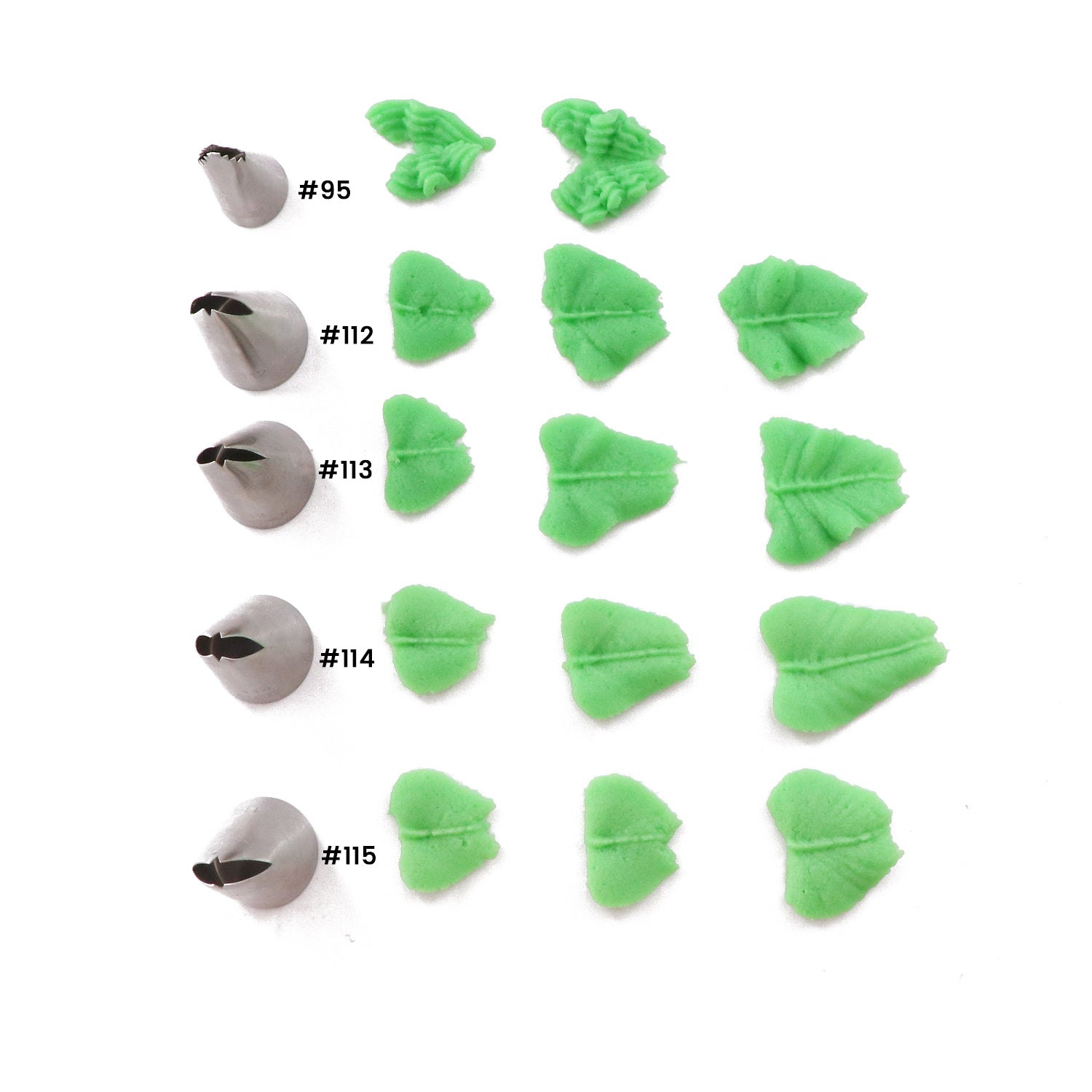Introduction to Cake Decorating with Leaf Tips

Cake decorating is an art form that goes beyond mere aesthetics; it’s a way to bring joy to your celebrations. Among the various tools in a decorator’s arsenal, the leaf tip holds a special place. This versatile piping tip can transform an ordinary cake into a masterpiece with the right techniques.
As someone who has spent years experimenting with different cake decorating styles, I can tell you that mastering the leaf tip opens up a world of creative possibilities. It’s not just about making a cake look pretty; it’s about expressing your creativity and making lasting memories.



What is a Leaf Tip?
The leaf tip, often referred to as the “leaf piping tip” or “leaf nozzle,” is a specialized piping tool designed to create realistic leaf shapes. It typically has a flat side and a pointed end, which allows decorators to produce various leaf designs with just a flick of the wrist.

Types of Leaf Tips
Understanding the different types of leaf tips is crucial for effective cake decorating. Here are some commonly used leaf tips and their features:

| Leaf Tip | Size | Uses |
|---|---|---|
| Wilton 352 | Large | Creating detailed, large leaves |
| Wilton 366 | Medium | Versatile for medium-sized leaves |
| PME Leaf Tip | Small | For delicate, small leaves |
Essential Tools for Using Leaf Tips
Before diving into cake decorating, having the right tools is essential. Here’s a list of must-have tools for using leaf tips:
- Piping Bags: Durable and flexible bags to hold your icing.
- Couplers: Helpful for switching between different piping tips without changing the piping bag.
- Scissors: To cut the end of the piping bags for efficient decorating.
- Royal Icing or Buttercream: The medium you will pipe with; royal icing dries hard, while buttercream remains soft.
Techniques for Piping Leaves
Basic Leaf Piping Technique
The most fundamental technique involves using the leaf tip to create the shape of a leaf. Here are the steps:
- Fill your piping bag with icing and attach the leaf tip.
- Hold the piping bag at a 45-degree angle to the cake surface.
- Squeeze gently while moving the tip outward to form the leaf shape.
- Release pressure as you finish the leaf, creating a natural point.
Creating Varied Leaf Shapes
Experimenting with pressure and angle can yield different leaf shapes:
- Tapered Leaves: Use less pressure as you finish the leaf.
- Wide Leaves: Apply more pressure throughout the piping.
- Curled Leaves: Gently lift the tip as you pipe to create a curl effect.
Common Mistakes and How to Avoid Them
Even seasoned decorators can make mistakes. Here are some common errors when using a leaf tip:
- Too Much Pressure: This can result in bulky, misshapen leaves. Practice varying your pressure.
- Wrong Angle: Hold the tip at the incorrect angle can lead to flat leaves. Always maintain that 45-degree angle.
- Dry Icing: A stiff consistency can cause breakage. Make sure your icing is the right consistency for piping.
Decorating Ideas Using Leaf Tips
Floral Arrangements
Combining leaf piping with flowers can create stunning cake decorations. Here’s how:
- Pipe flowers such as roses or daisies.
- Add leaves around the flowers to create a natural look.
Border Designs
Leaf tips can also be used to create elegant borders on cakes. Try these methods:
- Pipe leaves along the edges of your cake for a decorative border.
- Combine with other piping techniques like rosettes for more intricate designs.
Pros and Cons of Using Leaf Tips
Pros
- Versatile: Can be used in various designs, from floral arrangements to borders.
- Accessible: Easy to learn for beginners while offering room for creativity.
- Realistic: Creates a natural look that enhances cake aesthetics.
Cons
- Requires practice: Like any technique, mastery takes time.
- Can be messy: If not handled properly, icing can splatter.
Conclusion: Elevate Your Cake Decorating Skills
Mastering the leaf tip is a valuable skill for any cake decorator, whether you are a beginner or a seasoned pro. With practice, you can create beautiful decorations that will impress your family and friends. Remember to have fun with the process and let your creativity flow!
Frequently Asked Questions (FAQs)
1. What icing is best for using leaf tips?
Both royal icing and buttercream work well. Royal icing dries quickly and hardens, while buttercream remains soft and creamy.
2. Can I use leaf tips for other decorations?
Yes! Leaf tips can also create other designs, such as grass or feathers, depending on how you manipulate the piping technique.
3. How do I clean my leaf tips?
Soak your leaf tips in warm, soapy water for a few minutes and then gently brush any icing residue away with a soft brush.
4. Can I store unused icing in the piping bag?
Yes, but ensure to seal the piping bag properly and store it in the refrigerator to prevent the icing from drying out.